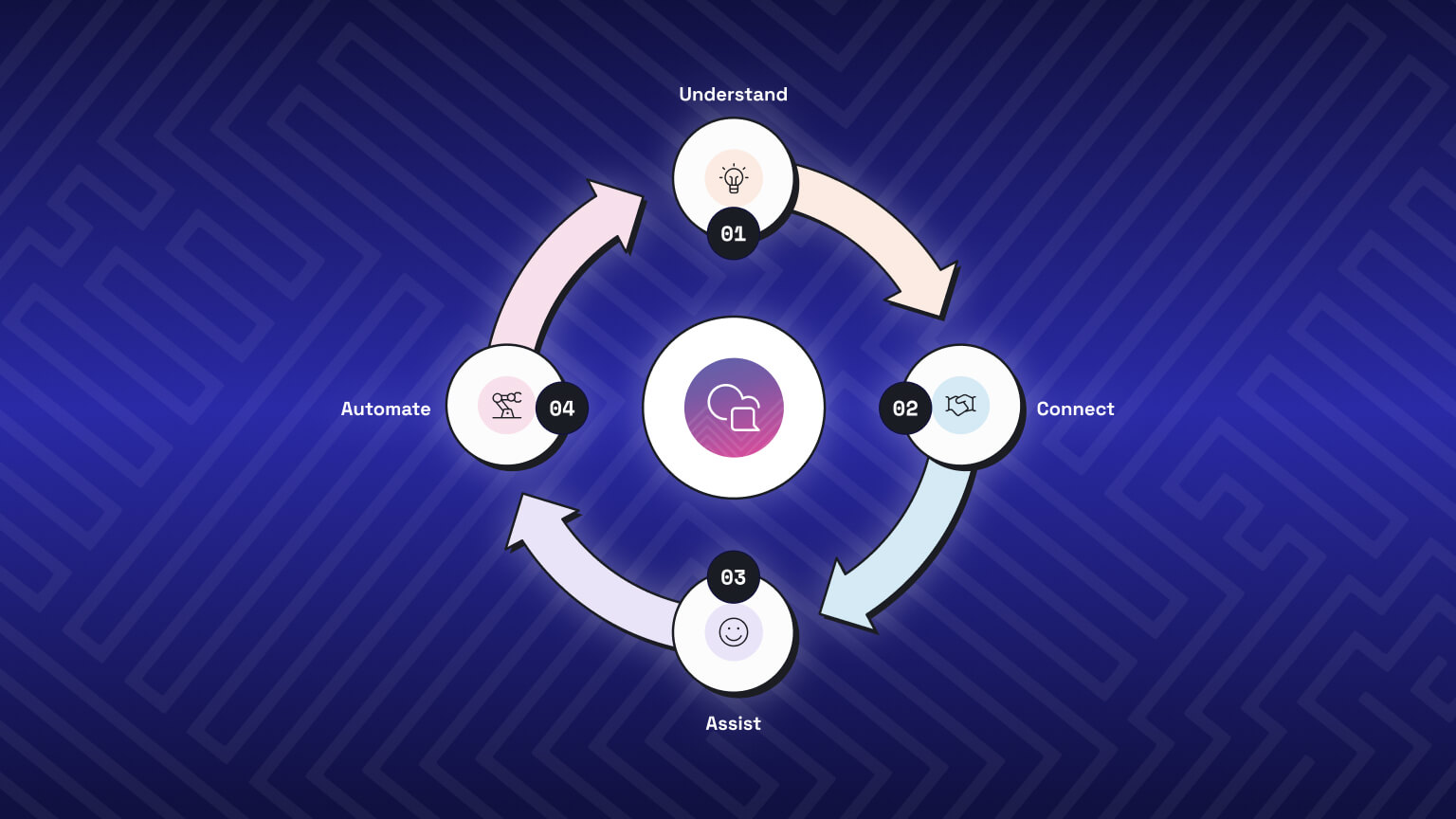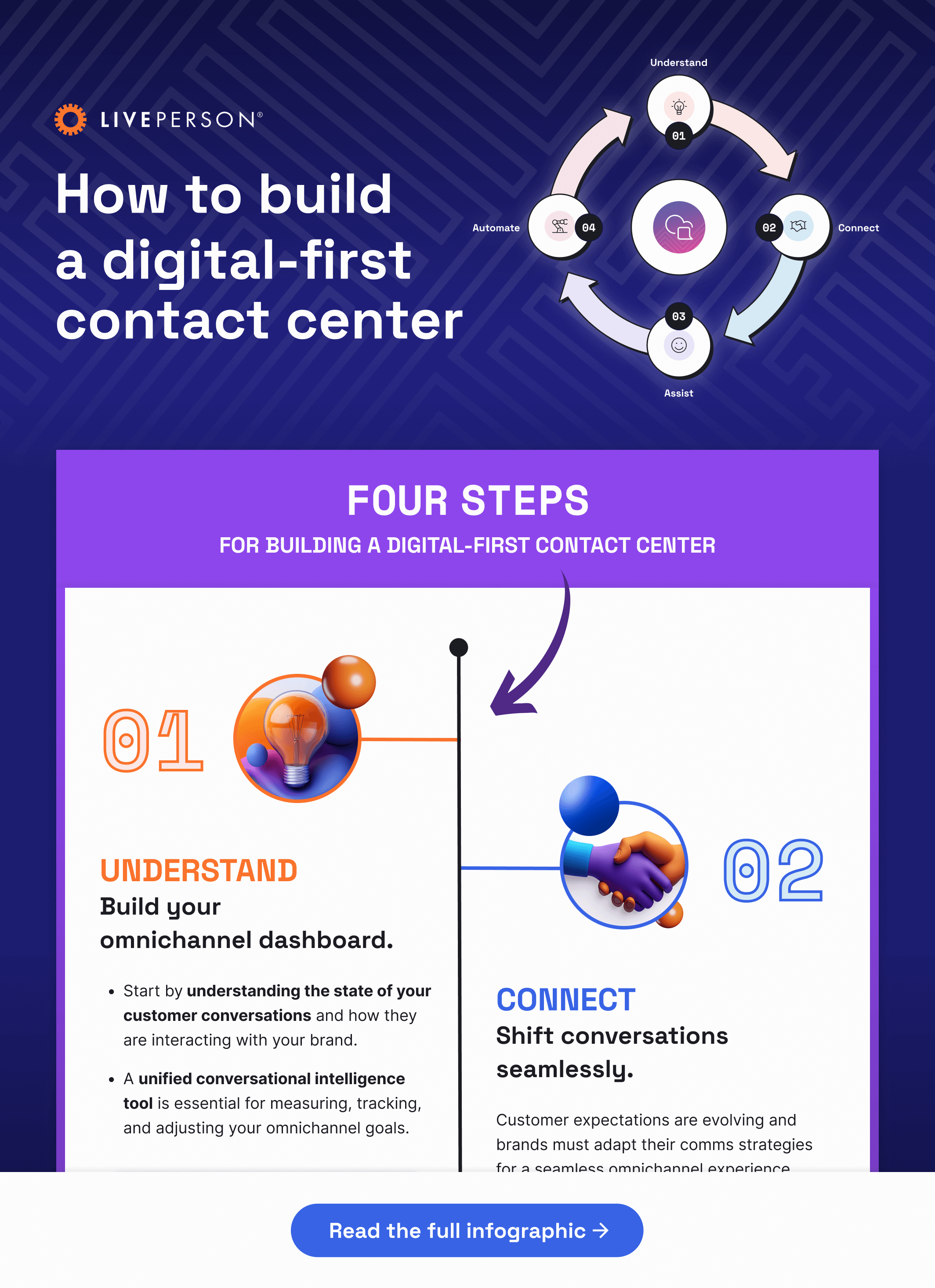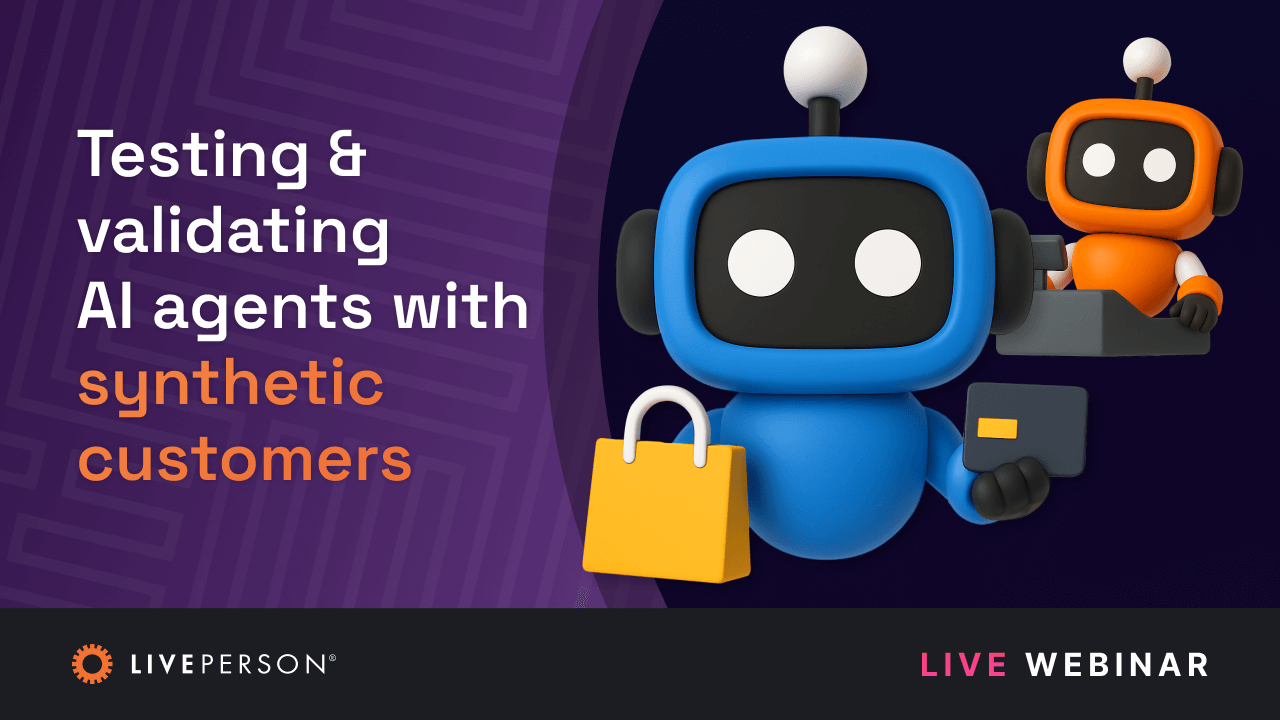INFOGRAPHIC
Omnichannel contact center solutions to feed your customer service experience
How to build a digital-first contact center
September 24, 2024 • 5 minutes

Today, voice is a critical component of successful digital transformation solutions. More importantly, the integration of voice into the digital ecosystem has become a necessity for delivering seamless, personalized experiences that meet and exceed customer expectations.
Advanced technologies such as voice AI, text-to-speech AI, conversation shifting, and conversational intelligence, help brands to unlock the full potential of their customer interactions. These tools empower agents to handle complex queries with greater efficiency, while also providing valuable insights into customer preferences and behaviors. The result is a more agile, responsive, and customer-centric organization that can adapt to the changing needs of the market.
To really embark on a voice to digital transformation journey, brands need a powerful toolkit for elevating their contact center operations. Here’s a look at the four steps brands can take to transform their existing infrastructure — driving significant cost savings, improved customer satisfaction, and increased agent retention.
Click to open or keep scrolling to learn the 4 steps to building best-of-breed omnichannel contact center solutions
Step 1 (Understand): Build your omnichannel dashboard
One of the goals of building omnichannel contact center solutions is gaining a better understanding of what the customer data tells you. In order to understand the state of your customer communications and how people interact with your brand, you need a unified conversational intelligence tool. It’s essential for measuring, tracking, and adjusting your omnichannel strategy and goals.
An omnichannel contact center software dashboard enables you to:
- Integrate voice data – Analyze voice conversations from phone calls and recordings alongside digital communication channels.
- Integrate messaging data – Collect data from multiple channels, such as chat, asynchronous messaging apps, and social media platforms.
- Build categories to compare voice vs. messaging – Create categories and tags to help identify customer behavior patterns, trends, and opportunities.
- Use metrics – Assess the complexity and effectiveness of conversations to route customer interactions to the best customer service channels. Think: What is the issue complexity, customer sentiment, and agent skills needed to address.
Step 2 (Connect): Shift conversations seamlessly
Customer expectations are evolving, and brands must adapt their comms strategies for a seamless customer experience. Conversation shifting, a form of call reduction, directs calls to a customer’s chosen messaging platform, providing a smoother transition from voice to digital interaction.
How this feature works to aid omnichannel contact centers:
- Customer calls a brand’s phone line.
- Customer is given the option to bypass hold and continue via a messaging channel.
- Customer receives link to their preferred messaging channel.
- Conversation seamlessly transitions to the chosen platform, no context lost.
Best practices for multichannel contact center conversation shifting:
- Provide a clear call to action and instructions encouraging customers to switch communication channels.
- Leverage intent-driven conversation shifting for specific needs, like shifting all password reset intents to messaging.
- Ensure a smooth transition for customers and customer service agents by passing context from the phone call to messaging.
- Train agents to manage customer interactions effectively in both voice and messaging channels (made easier with an omnichannel customer messaging platform).
- Monitor and analyze the performance of your transitions, so you can improve moving forward.
(Explore call reduction strategies in this guide.)
Step 3 (Assist): Create a unified agent workspace
There are a few important factors to consider when building a unified agent workspace for voice and messaging customer interactions. A unified space can boost agent productivity and help you manage omnichannel customer engagement. But please note: This only works if your agents can access all the conversation data, history, and communication channels they need to deliver personalized and exceptional customer service at scale.
Factors to consider:
- Multichannel view – If your customers switch, your customer support agents should be able to switch too.
- Conversation history – Help your agents support customers efficiently throughout the customer journey.
- Customer data – Access to your CRM is key for personalized service.
- Access to knowledge content – Empower your agents to offer better support with easy ways to search and use knowledge bases.
Step 4 (Automate): Enable efficiency and personalization
Voice automation helps deliver efficient, personalized support and engaging experiences at scale. By automating voice intents as part of omnichannel contact center solutions, brands can unlock a wide range of benefits that enhance both customer satisfaction and operational efficiency.
The value:
- Engage authentically – Create human-like interactions, customizing conversations for engaging experiences.
- Platform flexibility – Seamlessly integrate voice automation with existing contact center software and systems to evolve your business needs.
- Enhanced understanding – Leverage advanced natural language processing and machine learning to understand even more customer intents and sentiments.
- Real-time call transcription – Offer real-time call transcription, providing accurate and immediate access to conversation content to enhance your customer service function.
- Robust integrations – Ensure a cohesive, streamlined customer experience.
- Voice analytics – Transform voice conversations into actionable, valuable insights.
Driving success and savings with Voice AI
- Reduce voice channel expenditures by automating routine support calls, freeing up human customer support agents to focus on more complex customer issues.
- Use voice AI to deliver faster and more efficient IVR experiences.
- Use voice AI bots to boost agent retention by alleviating the burden on human agents.






